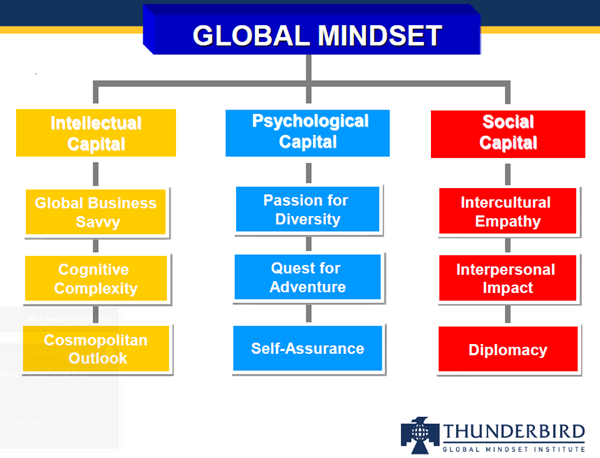ATD Blog
Re-Defining—Re-Imagining Global—Engagement
Wed Jul 08 2015

“End poverty in all its forms, everywhere.” That’s the first of 17 draft sustainable development goals (SDGs) expected to be ratified by the United Nations in September 2015. The next 16 goals are equally ambitious, the result of an impressive, inclusive, and worldwide consultative process. With the accompanying 169 indicators, it’s enough to paralyze even the most ambitious global leaders.
To develop the current proposed set of goals, the UN cast a wide net, above and beyond governments to include a diverse group of businesses, academia, and social-sector leadership. Gathering and distilling goals is just the beginning of an effort that will require a massive, strategic, tri-sector movement that must engage people in new and different ways to achieve the impact envisioned. What’s more, the private sector will need to engage and lead like never before, moving beyond niche philanthropic and CSR efforts to address the world’s most pressing problems.
How can we begin to work toward these goals?
With all the complexity on the international development front, there is great benefit in keeping it simple: Choose one goal, find some friends, work together, learn and adjust, and report progress. Then start the process all over again. Simply stated, start with your purpose and build out the practical.
Consider the question: Where does passion and purpose intersect with your organization’s ability to improve the lives of people around the globe? From there, it is all about instilling and aligning the right mindset, skillset, and experience set for effective global engagement.
Purposeful Engagement: Finding Friends and Working Together
Finding friends and working together certainly sounds easy enough, but as we all know, it’s difficult to do. However, this step is absolutely essential to move effectively from aspiration to achievement, so it’s important to stay committed. At PYXERA Global we talk about this as “engaging with purpose,” which requires a layered approach of three things: mindset, skillset, and experience set.

Mindset is all about attitude, and frankly, getting the right one. Start with the word “engagement,” because that’s the core. Keep in mind that engagement is something you do with someone, not to someone. Indeed, unlike the more traditional approaches to development, which connote something that is done “to” someone else, engagement avoids the hierarchy of rich to poor, expert to uninitiated, benefactor to beneficiary. Finally, the right mindset recognizes that there is much to teach and much to learn, universally.
Skillset. With the right mindset in place, what are the skills required to engage with purpose and succeed in global partnerships like the ones the SDGs will require? Based on discussions with leaders from every sector around the world, as well as drawing on extensive research conducted by the Thunderbird Global Mindset Institute over the past decade, strength in three skillset areas is essential: intellectual capital, psychological capital, and social capital.

Psychological capital and social capital are the most difficult areas to strengthen, typically because they require an enormous amount of self-awareness and self-regulation. More importantly, these two areas can only be developed through experience; they are skillsets steeped in the practice of cultivating trust, which takes time to develop and is deeply personal by nature. This means there is no quick way to develop competency in these skillset areas, because they evolve and advance ideally over the course of one’s career. Consequently, they should be seeded as early on as possible, long before a leadership assignment or role.
How can your organization initiate this sort of development? Focus on your high potential pipeline as well as your senior leadership. Be sure to expose them to these concepts internally by taking the Global Mindset Inventory, and also have them read Jim Stengel’s groundbreaking book Grow: How Ideals Power Growth and Profit in the World’s Greatest Companies. There is a very real business case for having companies engage in solving the world’s most pressing problems. Too few, however, set it up as brilliantly as Stengel does.
Finally, have senior leadership communicate how your organization plans to engage and solicit input from its people. To effectively engage on a global scope, everyone needs to buy into and be part of the conversation from the beginning. More importantly, encourage everyone to build experience and strength in using these skillsets externally and in diverse global environments.
Experience. What you do matters. Putting mindset and skillset into action is what converts aspiration into achievement. It isn’t necessary to perfect an approach before beginning, though—as long as you leave space, time, and resources to adjust. To engage effectively on global challenges, people need direct experience working across sectors in demanding and diverse global environments. To be effective, they also need to listen, learn, lead (and be led), and then leave (as in legacy) in any environment, on the ground, every time.
Go There: Change the World
One key way to accelerate emotional and intellectual understanding is to immerse yourself in the environment—in a way that is safe and secure, but also uncomfortable. This begins with mindful, active listening and observing what is happening on the ground.
One approach to doing this is through short-term, pro bono assignments, which have demonstrably high capability to accelerate leadership development in all global mindset capital areas. Another method is to regularly take a deep dive into some aspect of your value chain, taking on the shared responsibility to wrestle with a particular thorny issue or challenge that requires multiple perspectives and diverse contributions to be resolved.
In other words, your business is your business school. Create a case challenge out of a real and pressing business needs that also intersect with a large global need. Then, be sure to actually let your people (and not just the same people) develop solutions and run with them.
Bottom line: Engaging with purpose requires the right mindset, skillset, and willingness to make progress through experience. This is more like a circle than you might think. Pick one place and start moving. To be sure, engagement isn’t easy—and it can be messy. Looking at the achievements in global partnerships over the past decade, though, should give us all hope that incredible change and sustaining impact on our world’s greatest challenges is possible during our lifetime. It’s worth the effort, and it’s going on now all over the world. Join us.
You've Reached ATD Member-only Content
Become an ATD member to continue
Already a member?Sign In
